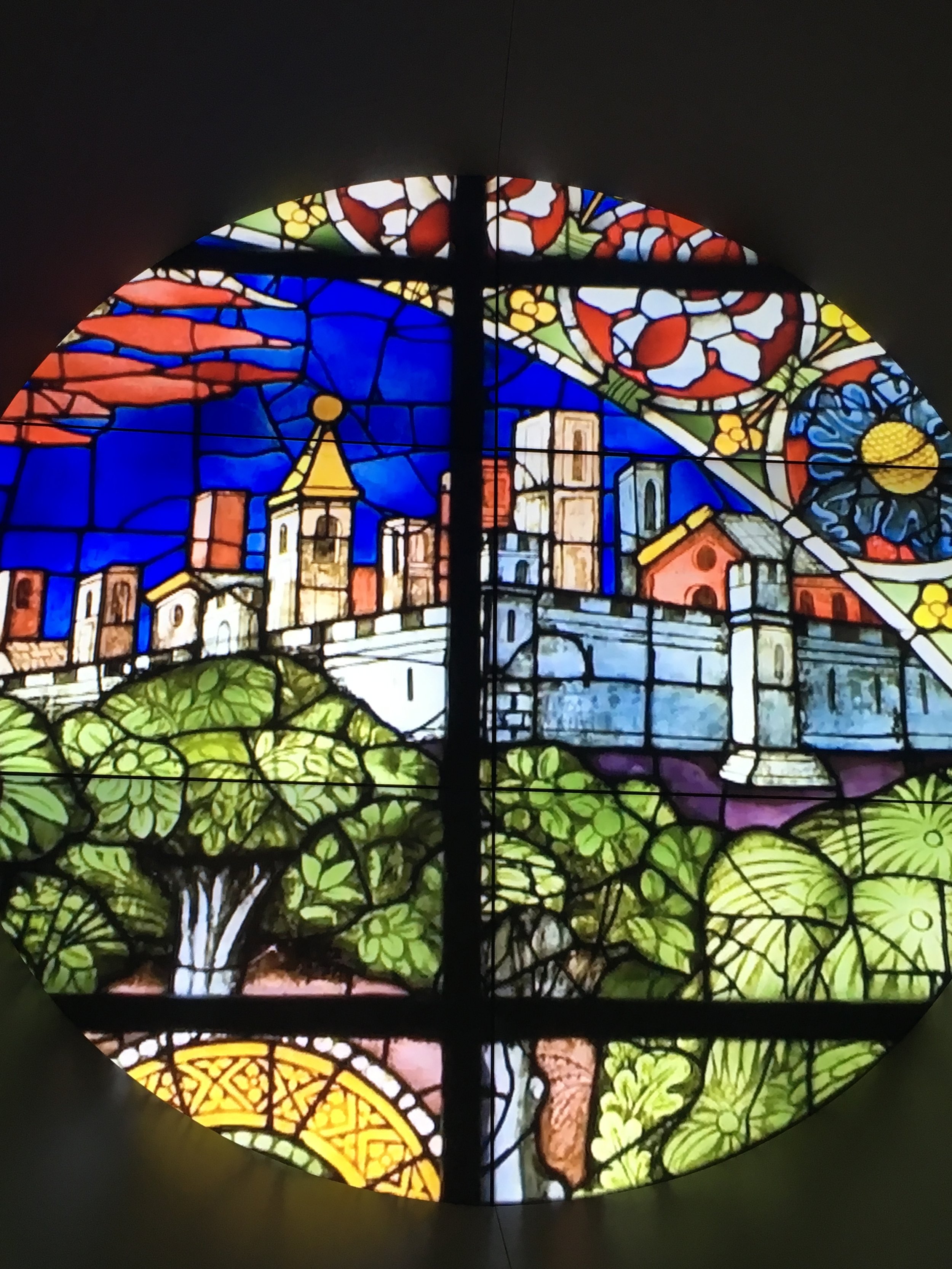Museo dell’Opera del Duomo (The Museum of the Works of the Cathedral, Florence)
Many years ago, on my first visit to Florence, I visited the Museo dell’Opera del Duomo (the museum associated with the Cathedral of Santa Maria del Fiore, usually referred to as “the Duomo”). At that time (1996), the museum was a jumble of a space, small and crowded with poorly displayed art and artifacts from the famous cathedral. I was not inspired to return.
Detail from a sculpture by Ticciati, once part of the main altar in the Duomo, now in the redesigned museum entry
In recent years, the museum has been enlarged and has undergone a top-to-bottom renovation (completed in 2015). On a recent trip to Florence I decided to revisit the museum to see the changes – and my only word is WOW - what a change!
16th century bust of Mary Magdalene, Giovanni Bandini
The museum is now an amazing space, full of light, open galleries, and fascinating art and artifacts from throughout the cathedral’s history.
The displays are well organized, beautifully presented, and provide good historical context.
Many of the pieces are original, moved from the cathedral itself. These include Ghiberti’s bronze baptistery doors, an evocative Pietà by Michelangelo, a carved wooden Mary Magdalene by Donatello, and portions of a larger-than-life sculpture from what was once a main altar in an earlier version of the cathedral (top photo).
A reproduction of the church facade, lined with statuary, fills the long, high gallery on the ground floor. How wonderful to get a closer look at these examples of statues that are so high up on the actual cathedral’s exterior. The facade can also be enjoyed from a viewing gallery on the floor above, which provides an even closer look at the statues high up on the recreated facade.
Statue gallery
Across from this wall of statues are the two massive bronze baptistery doors by Ghiberti. I could spend hours looking at the details of the panels that make up these doors. Each panel tells a story in intricate detail.
Detail of panels from the north baptistry doors
Wooden model of the lantern that rises above the cupola
Central to the history of the cathedral is the building of the cupola (dome). Designed by Brunelleschi, it is a marvel of engineering and architecture.
The museum has an area dedicated to its construction that includes models of the dome and the lantern that caps it, a video presentation, and a display of tools used in the dome’s construction.
Considering that the cupola was built in the 15th century, is this impressive engineering or miracle?
One of my favorite displays was the reproductions of the stained glass windows. More than a static display, the dynamic technology brings the windows up close, allowing the brilliant colors and designs to unfold before one’s eyes to be viewed in detail.
Of course a cathedral must have music and the museum includes beautifully illustrated books of sacred music and two marble choir lofts (actually designed for organs not choirs). One loft was designed by della Robbia and the other by Donatello. Both are beautiful but quite different in character.
Joyful children play across della Robbia’s sculpted choir loft
Detail from large book of sacred music
To end a visit here, be sure to view the actual dome from the viewing platform on the museum’s top floor.
The redesigned Museo dell’Opera del Duomo is nothing short of marvelous. Kudos to the redesign team - what a gift they have given us. - Post by JMB
Location: Piazza del Duomo 9, 50122 Florence, Italy
Hours: Sunday through Saturday 9 a.m. to 7 p.m., Sunday 9 a.m. to 2 p.m. Closed Mondays and first Tuesday of the month. Hours subject to change; best to check ahead of time
Cost: an 18 euro ticket allows access to the museum and baptistery . Several combined museum tickets also area available









































